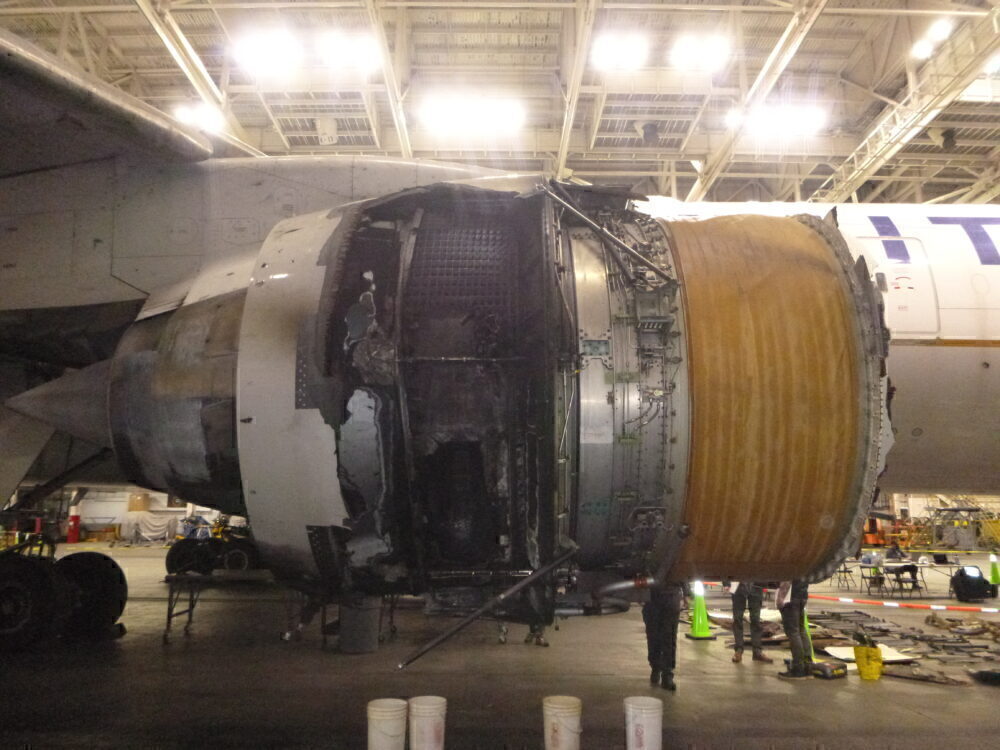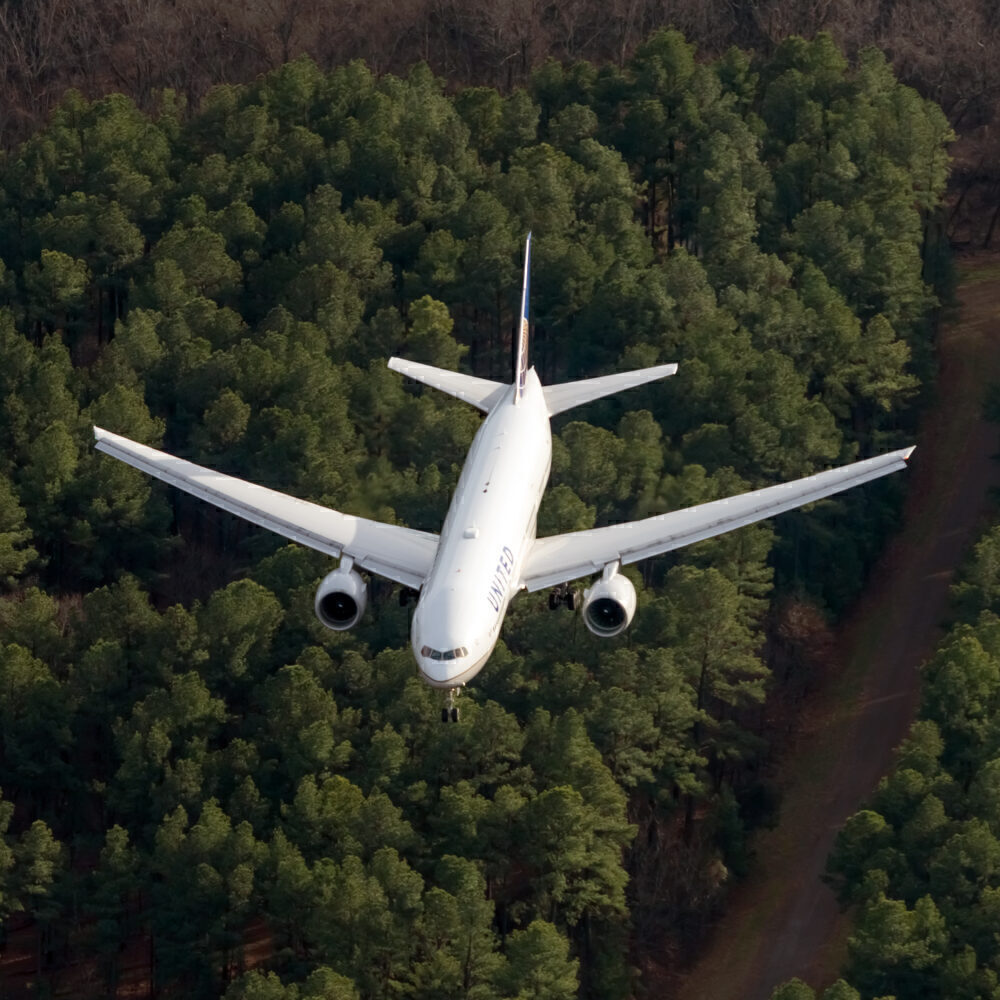The United States National Transportation Safety Board (NTSB) released an update on Friday about the United Airlines Boeing 777 engine incident. In late February, the aircraft was climbing out of Denver International Airport (DEN) when the pilots throttled up the engines in anticipation of turbulence. Shortly after that, a loud bang and fire coming from the engine led the pilots to bring the plane back to Denver.

New details about what happened inflight
On Friday, the NTSB published additional information on the ongoing investigation of United Airlines flight 328 involving a Boeing 777-200 equipped with Pratt & Whitney PW4077 engines.
On February 20th, 2021, the aircraft was climbing out of DEN with 239 passengers and crew onboard. According to the NTSB, about four minutes after takeoff, as the plane flew through 12,500 feet mean sea level (MSL) with an airspeed of 280 knots, the flight crew increased power to the engines.

The pilots did so in response to expected turbulence during their climb up to flight level 230. Turbulence, especially around the mountainous Denver-area, is not unusual in the airline industry, and pilots have some options when dealing with turbulence.
Data from the CVR indicates that almost immediately after the throttles were advanced, there was a loud bang with the right-hand engine making an uncommanded shutdown, followed by an engine fire warning. Some parts of the engine fell off the aircraft to the ground but were later recovered.

Declaring an emergency, the flight crew decided to return to conduct an emergency landing in Denver. The flight crew completed checklists, including the engine fire checklist, and discharged both fire bottles into the engine in an attempt to extinguish the fire. However, the engine fire warning remained active “until the airplane was on an extended downwind for landing.”
Taking in all the information, the pilots decided not to dump fuel for safety and time reasons. The captain successfully completed a one-engine-inoperative approach in Denver, where emergency services met the aircraft on the runway.

The NTSB looks at the engine
The NTSB almost immediately began looking at the engine itself. That analysis is ongoing. However, the initial damage found fire damage, consistent with the incident, but there were damaged fan blades.
Two blades were fractured when the NTSB looked at it. The evidence with one of the blades was consistent with fatigue. Another blade had “shear lips that were consistent with an overload failure.”

In the immediate aftermath, Pratt & Whitney issued a notice to operators providing revised inspection thresholds. Thermal acoustic image (TAI) inspection thresholds were revised to 1,000 cycles for the first stage low compressor (LPC) blades on affected engines. The FAA followed this up with an Emergency Airworthiness Directive, requiring TAI inspections of LPC blades for cracks.
Part of United’s 777 fleet remains grounded
United Airlines, shortly after, voluntarily removed 24 of its Pratt & Whitney 4000-powered Boeing 777 aircraft from service. The airline is working to fill in the gaps in its schedules as these aircraft remain parked temporarily.

Once the FAA and Pratt & Whitney provide some additional guidance on the necessary fixes and United can complete them, the airline will put the Boeing 777s back into revenue service.
An issue that does not affect all Boeing 777s
The Boeing 777s are some of the most well-known aircraft in the world. These jets transport thousands of passengers around the world each day. The groundings, which do stretch to other countries, include a small subset of the Boeing 777 fleets flying across the world. United flies an extensive fleet of 777 aircraft near and far, including to points in Europe and Asia.

Plenty of carriers ranging from American Airlines to ANA to Cathay Pacific to Air France to British Airways to Qatar Airways to Emirates continue to fly Boeing 777 aircraft safely worldwide.
In aviation, incidents like this do happen. However, flight crew are trained extensively for how to react in such situations, and the crew here followed their training and brought the aircraft down to the ground safely with no injuries to passengers or crew.
[ad_2]
Source link


